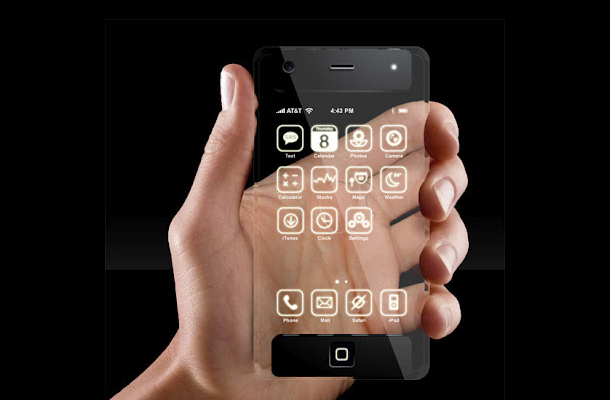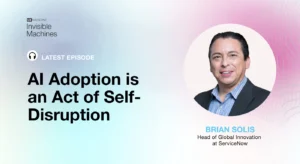Guest post by Jaimy Szymanski (@jaimy_marie), Analyst, Speaker, Advisor
In order to inspire great digital transformation within an organization, strategists must provide proof of concept on a smaller scale. Often times, change agents focus first on transforming their approach to mobile customer experience (CX) design, in order to make the case for overhauling the company’s entire approach to digital CX strategy.
Over the past two years, my colleague Brian Solis and I have researched the evolution of digital transformation through the lens of CX, and how mobile plays a key role in furthering digital transformation efforts. We found that strategists struggle with rallying stakeholder support and garnering resources for digital transformation if they have no proof of its benefits and potential ROI. Executives demand results to invest, but resources are needed to incite change. It’s a classic “chicken and egg” scenario.
The good news is, strategists find success when they position mobile as the ideal use case for proving the business benefits of focusing more deeply on digital customer needs, problems, and expectations.
For example, at Starbucks, Chief Digital Officer and EVP of Digital Ventures Adam Brotman used mobile as a catalyst for digital transformation. He previously led a cross-functional mobile team at Starbucks that brought together people from multiple departments to craft the company’s mobile vision and strategize against mutually beneficial objectives. “I started with mobile; that was the heart of it where we really acted as a team,” he said. “That worked well and catalyzed, moving into web where we were charged with figuring out what our mobile web strategy looked like and how it connected to our loyalty and payment groups. From there, it snowballed pretty quickly.”
Using mobile as an initial catalyst to spark cross-functional working groups, Brotman was able to create the momentum needed to begin refocusing the company around a unified digital approach. In 2011, Starbucks realized major strides on mobile, mobile payment, loyalty, social, and e-gifting. By 2012, Brotman’s team and other departments, like IT, were already working as one larger cross-functional team operating in unison toward common CX goals and objectives.
Although mobile lights the fire for larger digital change, it is still widely misunderstood and requires a new approach to CX architecture.
In late 2014, we expanded our research on digital transformation, looking more closely at mobile’s role in retooling how companies approach CX design. We spoke with more than 23 mobile stakeholders, from digital strategists to executives to industry thought leaders, at organizations spanning a variety of industries. I was surprised to learn that, although we knew that mobile plays a huge role in catalyzing digital transformation, it is still widely misunderstood and underfunded today.
Some companies are approaching mobile through the lens of advertising alone, without incorporating it into larger, top-level customer experience design efforts. Other companies are unwittingly forcing channel-hopping and multiscreening due to an incomplete understanding of their customers. Overall, mobile customer engagement and experience architecture is far behind what consumers desire, creating a severe chasm that’s swallowing customers as they leave brands for competitors offering more mobile-friendly (and, mobile-only) app and site experiences.
The mobile problems strategists face mirror those felt on a larger digital scale, and in many other silos that execute against digital priorities. This primes mobile to be the ideal case study for strategists looking to steer the greater digital ship—a ship that would otherwise require more time, support, and resources to change course.
In order to set the foundation for digital transformation with customer-centric mobile experience and strategy design, leading companies follow four key steps. We’ve found that adhering to these best practices better engages customers and produces greater bottom-line results:
1. Map the Mobile Customer Journey: Study the mobile customer journey as it exists today, including devices used, challenges, and opportunities within each. Delve into data specific to your mobile customers to define “day-in-the-life” mobile personas that inform customer-centric strategies.
2. Re-Imagine the Mobile Customer Journey: Design a mobile-optimized journey, by device, to win in each moment of truth. Experiment with strategies that prevent channel-hopping or multiscreening while also complementing other channels. Define a series of intended mobile experiences at each stage of the customer journey, aligning each with customer personas and related data.
3. Measure and Optimize: Define intended customer response and desired outcomes at each step in the mobile customer journey, by screen. Link back to business goals and shorter term KPIs to measure progress and optimize engagement in each moment of truth.
4. Create Alignment Through a Test-and-Learn Approach: Present customer findings, the newly minted mobile-first journey, and key business outcomes to the greater working team around mobile, digital, and CX. Run a test pilot of the roadmap to validate research and ideas and gain internal support.
Bolstering mobile strategies based on a rich understanding of customers (data!) will increase the likelihood of success for change agents who are striving to connect the CX dots on a grander digital scale. It’s a symbiotic relationship that requires digital transformation and mobile to be adequately resourced and collaboratively strategized under a common digital CX vision in order for both to thrive.






8 COMMENTS ON THIS POST To “Mobile CX (Re)design: A Catalyst for Digital Transformation”